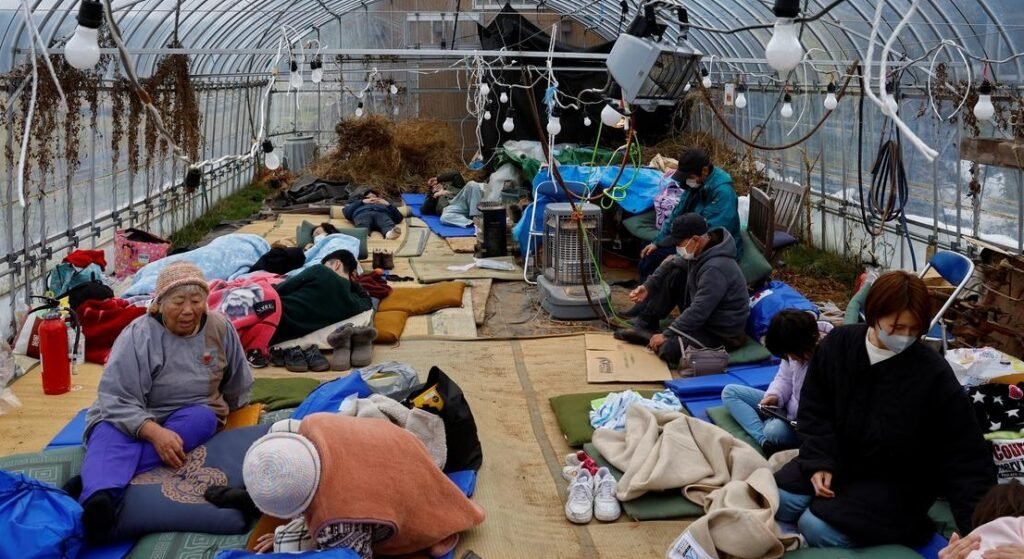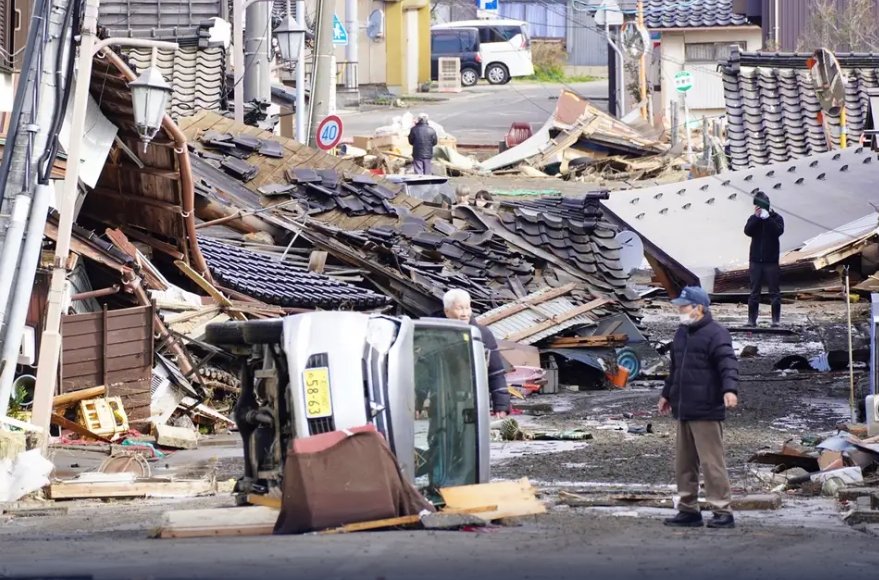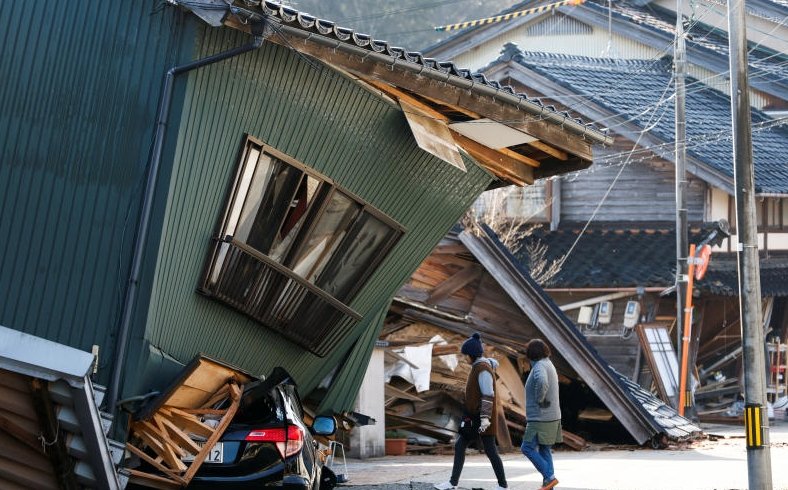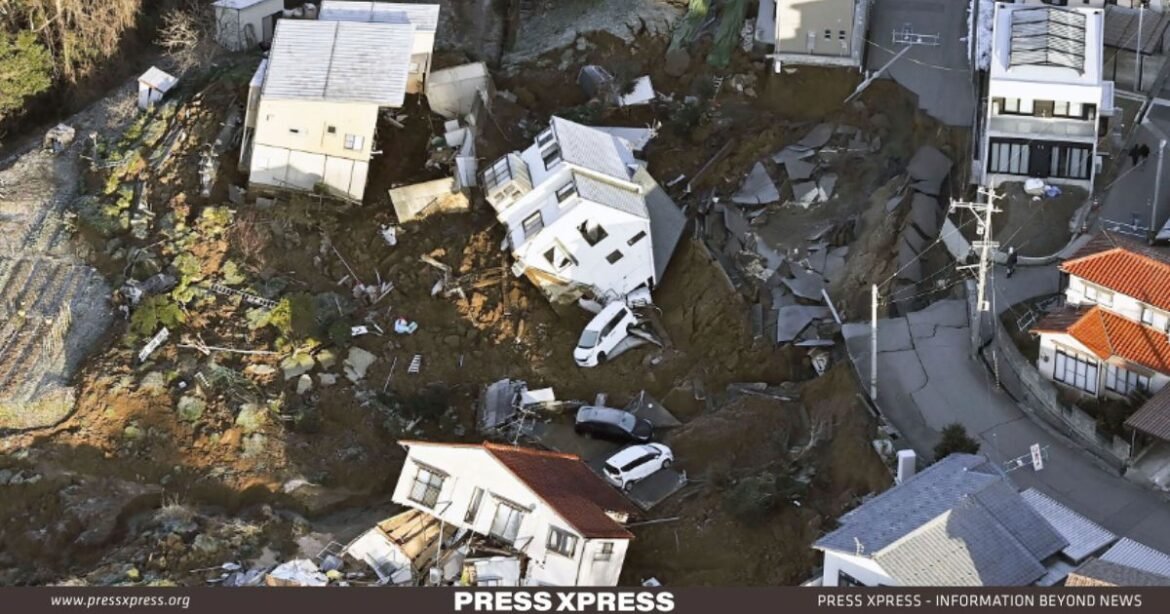Key Points
- Survivors face freezing rain, threat of landslides
- Severed road connections make it difficult to reach survivors with aid
- Desperate calls for help from survivors 40 hours after earthquake
The earthquake is the only natural disaster that cannot be predicted by science and technology. Even the most advanced human-made technology won’t warn us minutes before a tremor, no matter how mild or severe it is, causes chaos in a specific region of the planet Erath. Due to this element of unpredictability, earthquakes are the most resented and can often prove to be deadly.
The 7.5-magnitude quake, which struck on January 1 and shook Ishikawa prefecture on Honshu’s main island, triggered tsunami waves exceeding a meter in height. It also ignited a significant fire and ripped apart roads in its wake. The calamity, which struck at approximately 4:10 p.m., unleashed a cataclysmic force upon Ishikawa Prefecture, leaving in its wake a trail of destruction and despair. More than 300 people are reportedly injured and 20 of them are in serious condition.
Earlier, on December 18 (2023), a 6.2 magnitude earthquake hit northwest China, resulting in widespread devastation. The aftermath has been distressing, with a confirmed death toll of at least 149 people and significant damage to homes and livelihoods that cannot be easily repaired.
Toll of Destruction
Official reports confirm a grim toll—62 lives lost in the wake of the quake. Among them, 19 souls from Wajima, a city at the heart of Ishikawa Prefecture, where the seismic tremors originated. The earthquake, registering a staggering 7.6 on the Japanese seismic intensity scale, unleashed chaos and tragedy, triggering tsunami warnings, mass evacuations, and widespread power outages.

The horror compounded as a massive fire erupted in Wajima, consuming the already ravaged landscape. Trapped in the debris of collapsed structures, some lost their lives amidst the rubble, their hopes tragically crushed.

Ongoing Recovery Efforts
While the tsunami warnings have been lifted, the scars of the catastrophe remain vivid. Rescue teams comprising police, firefighters, and Self-Defense Forces relentlessly scour the landscape, navigating through buckled roads and the haunting remnants of charred homes and businesses. The scale of destruction is immense—approximately 33,000 homes in Ishikawa and neighboring Niigata Prefecture remain without power, while close to 20,000 homes across four prefectures grapple with a lack of running water.
Chief Cabinet Secretary Yoshimasa Hayashi revealed the staggering displacement caused by the disaster—57,360 individuals seeking refuge in nearly 1,000 evacuation centers spread across affected prefectures. Moreover, the unsettling prospect of a higher death toll looms as authorities receive reports of 120 incidents involving individuals trapped beneath the rubble.
Despite the harrowing circumstances, Japan’s resilience shines through. Prime Minister Fumio Kishida reassured the nation, highlighting concerted efforts to clear blocked roads and provide essential supplies to those sheltered in evacuation centers. Retailers have mobilized resources, supplying water, food, blankets, and portable toilets to alleviate the suffering of those affected.

Previous Earthquake in Japan
Notably, In Hokkaido, Japan, on September 6 of that year, a magnitude 6.7 earthquake struck, claiming seven lives and triggering a city landslide that isolated 5.3 million residents.
On February 13, 2021, a magnitude 7.3 earthquake rocked Japan’s Fukushima coast, causing injuries to several individuals. Landslides and power outages affected thousands of residents.
March 16, 2022, witnessed another seismic event—a magnitude 7.3 earthquake off the coast of Fukushima. Tragically, it resulted in two fatalities and left 94 people injured.
Uncertain Future and Cautionary Measures
As aftershocks continue to ripple through the region, officials caution residents to brace themselves for potential landslides, new tsunami warnings, or further seismic activity. Noriko Kamaya from the Japan Meteorological Agency emphasized the need for vigilance, warning of a 10 to 20 percent chance of another earthquake of similar intensity within the next week. Residents were particularly urged to exercise caution during sea-based activities.
The road to recovery appears daunting, but Japan stands united in confronting this catastrophe. As the nation mourns its losses and grapples with the aftermath, a collective determination emerges to rebuild shattered lives and communities, embodying the indomitable spirit that defines this resilient nation.
Past Tragedy
Unfortunately, this earthquake resembles a severe quake that rattled eastern Afghanistan in June 2022. Occurring in rugged terrain, it demolished stone and mud-brick homes, marking it as the deadliest quake the country faced in two decades, claiming over 1,000 lives and injuring around 1,500.
In March, northeastern Afghanistan was hit by another catastrophic earthquake, causing mass evacuations, destroying buildings, and triggering destructive landslides.

Amidst the aftermath, the international community stands committed to aiding the Afghan people, offering support and hope amidst the devastation.
More recently, Morocco experienced a devastating earthquake. Striking the High Atlas Mountain range with a magnitude of 6.8 on September 8th, the quake claimed a grim toll of 2,122 lives, predominantly in Al-Haouz and Taroudant provinces, with 2,421 reported injuries.
Bangladeshi Experts Predict Impending Earthquake Devastation
Amid heightened concerns voiced by geologists and experts regarding potential earthquakes in Bangladesh, Mir Fazlul Karim, a former director of the Geological Survey of Bangladesh, offers a dissenting perspective. He challenges projections of major earthquakes, citing Bangladesh’s geological composition as incapable of generating such high-magnitude events in one instance.
The understanding of Bangladesh’s earthquake susceptibility remains constrained due to a dearth of comprehensive scientific assessments. Karim underscores the lack of substantial field studies specific to the country, highlighting the limitations of model-based forecasts that lack empirical validation. He warns that these uncertain predictions could burden disaster management efforts and impede the nation’s progress.
Although historical records and geological maps suggest a moderate earthquake risk in Bangladesh, this contrasts with global seismic response maps that portray lower hazard zones covering much of the country, including the capital, Dhaka.


